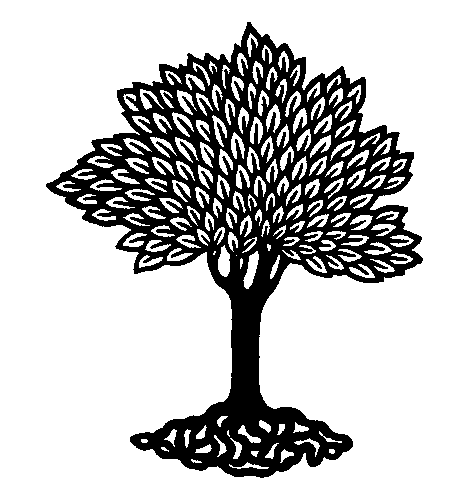
 |
Plant Taxonomy (BIOL308) - Stephen G. Saupe, Ph.D.; Biology Department, College of St. Benedict/St. John's University, Collegeville, MN 56321; ssaupe@csbsju.edu; http://www.employees.csbsju.edu/ssaupe/ |
Fruit Questions
Misconception Question: Describe the botanical misconception that is expressed by each of the following statements.
sunflower seed
straw"berry"
Momma says "eat your peas because vegetables are good for you"
"Mmmmm, this is great rhubarb pie. How much fruit did you put into it"?
I love coco"nuts".
Fill-In-The-Blank Question Identify the fruit type (possible answers include: achene, samara, nut, schizocarp, caryopsis, capsule, silique, legume, loment, follicle, berry, pepo, hesperidium, aggregate, multiple, synconium)
A fleshy fruit with a leathery pericarp, like an orange is a: _________________________
A fig is an example of this type of fruit: ____________________________
Plants in the Mustard family produce these fruits that dehisce leaving a septum: _________________
A fleshy fruit with a pit (stone fruits): ______________________
The pit of a stone fruit is comprised of these two structures: _________________ & ________________
Pineapples are derived from (one/many) flowers: ________________________
The flesh of an apple is derived from this structure: __________________________
A fleshy fruit with a leathery pericarp, like an orange is a: _________________________
A fig is an example of this type of fruit: ____________________________
Plants in the Mustard family produce these fruits that dehisce leaving a septum: _________________
A fleshy fruit with a pit (stone fruits): ______________________
The pit of a stone fruit is comprised of these two structures: _________________ & ________________
Pineapples are derived from (one/many) flowers: ________________________
The flesh of an apple is derived from this structure: __________________________
A fleshy fruit with a leathery pericarp, like an orange is a: _________________________
A fig is an example of this type of fruit: ____________________________
Plants in the Mustard family produce these fruits that dehisce leaving a septum: _________________
A fleshy fruit with a pit (stone fruits): ______________________
The pit of a stone fruit is comprised of these two structures: _________________ & ________________
Pineapples are derived from (one/many) flowers: ________________________
The flesh of an apple is derived from this structure: __________________________
What's the Difference? Question: Describe the difference between:
a loment and legume?
grain and achene
a fruit and a vegetable
Fruit Identification Question: Complete the table for a green bean, watermelon and strawberry.
Question |
Green bean |
Watermelon |
Strawberry |
| Is the pericarp fleshy or dry? | |||
| How many ovaries were required to produce this fruit? | |||
| How many flowers were involved? | |||
| Is the fruit simple, aggregate or multiple? | |||
| Are structures other than matured ovary present (yes or no)? | |||
| How many carpels were involved in the formation of this fruit? | |||
| What type of gynoecium was involved? (apocarpous, including monocarpellate or syncarpous) | |||
| What type of placentation does this fruit exhibit? | |||
| Approximately how many ovules per fruit? | |||
| Is this fruit type normally dehiscent or indehiscent | |||
| What "TYPE" of fruit is it? |
Life Cycle True/False Question: Circle the correct response.
False True After fertilization, the ovule develops into a fruit
False True Each seed requires two pollen grains for development
False True Fertilization occurs in the carpel (ovule)
False True For every seed there was one ovule in the ovary
False True Meiosis occurs in the anther and ovule
False True Plants have sex (meiosis & fertilization)
False True Plants have two fertilizations
False True Pollen is the male gametophyte
False True A pollen grain is a sporophyte
False True The ovule contains the female gametophyte
False True Pollination occurs in the anther.
False True Fertilization occurs in the ovule
False True Pollination and fertilization are synonyms for the same events
False True A tomato is dehiscent
False True A tomato is an aggregate fruit
False True A tomato is derived from a single ovary
False True A tomato is derived from many flowers
False True A tomato is a dry fruit
False True A tomato ovary has many ovules
False True A tomato tastes good
Definition: Define or describe the following.
simple fruit
ventral suture
indehiscent
pericarp
Short Answer Questions.
How can you tell the difference between a fruit, seed, and vegetable?
Identify five ways that fruits/seeds are dispersed.
What does the saying, �the apple doesn�t fall far from the tree,� tell us about the likely method of dispersal for apples?
Can you describe the life cycle of an angiosperm using the following terms: sporophyte, gametophyte, diploid, haploid, 2n, n, spore, gamete, pollen, immature male gametophyte, female gametophyte, ovule, anther, ovary, pollen tube, stigma, generative nucleus, tube nucleus, egg, synergids, sperm, polar nuclei.
Special
Brainteaswer Bonus: | Top | Plant Tax. Home | SGS Home | Disclaimer
| Last updated:
09/26/2007 / � Copyright by SG
Saupe
On a trip to the supermarket or garden store, did you ever
notice that you can buy seeds for seedless watermelons? If the watermelons
that grow from these seeds are truly seedless (which they are!), then where do
the seeds for growing seedless watermelons come from? click here for the
answer